- 25
- Jan
Anchor rod induction heating quenching and tempering heat treatment production line
Anchor rod induction heating quenching and tempering heat treatment production line
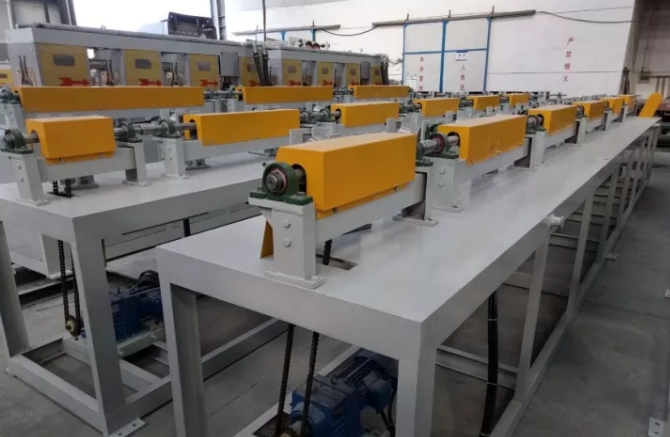
The application of bolt reinforcement technology in engineering is very extensive. At present, it has been developed in the application of ground anchoring in underground engineering, slope engineering, structural anti-floating engineering, deep foundation pit engineering, gravity dam reinforcement engineering, bridge engineering, and anti-overturning and seismic engineering. In recent years, my country’s ongoing large-scale infrastructure construction including high-speed railways, cross-sea bridges, subsea tunnels, subways, wind power, etc. encountered foundation treatment, slope reinforcement, underground space structure reinforcement, and underwater space structure solidification. Among the various problems, the method of reinforcing the anchor rod has been greatly expanded. Like other quenching and tempering, the induction quenching and tempering heat treatment production line is mainly to improve the mechanical properties of the bolt and obtain the desired sorbite structure.
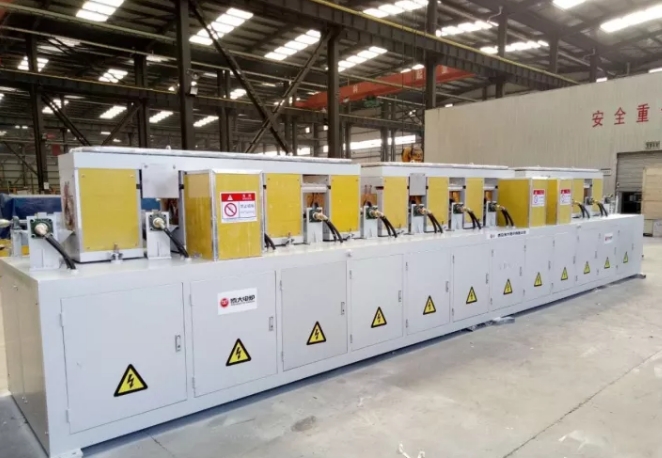
Project Introduction:
Independent research and development, production and manufacturing. This quenching and tempering heat treatment production line consists of two parts: quenching and tempering; the quenching heating part is composed of two sets of intermediate frequency power supplies with different powers and multiple sets of heating induction coils. The total power of the quenching part is 750Kw, the total power of the tempering part is 400Kw, and the bus length reaches 38.62. M, the spray part is composed of three groups of spray circles.
Process and technical parameters:
Savaivony bar (mm): Φ30-65
Bar halavan’ny isan-karazany (mm): 2000-7500
Bar material: 45, 40Cr, 42CrMo, etc.
Quenching mari-pana: 750-1200 ℃
Tempering mari-pana: 500-900 ℃
Hardness range: 25-40HRC
Famokarana ambony indrindra: 2t/h
The final hardness uniformity is required to be ±10HB. On the basis of the straightness of the raw material, the straightness of the bar after quenching and tempering is required to be less than 1mm/m.
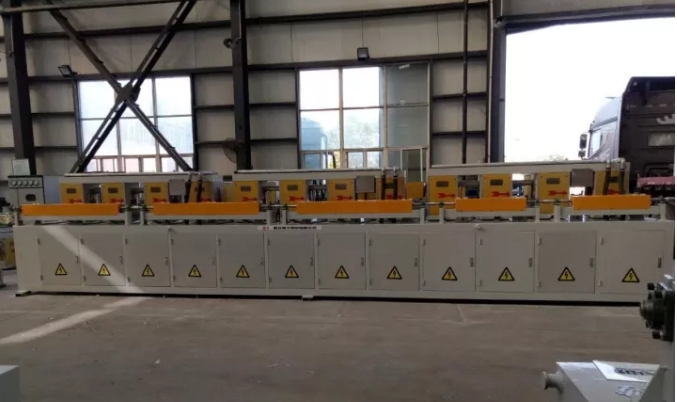
Ny peratra famafazana dia mampiasa karazana voahidy tanteraka, izay manakana ny fiparitahan’ny ranon-tsavony ary manampy amin’ny fiverenan’ny rano koa. Ny toeran’ny fitaovana famafazana grading dia azo amboarina, ary misy tohodrano ho an’ny famerenana ny ranon-tsakafo mba hisorohana ny fiparitahan’ny rano. Ny haavon’ny rafitra famafazana tsirairay dia manana paompy rano tsy miankina sy flowmeter elektronika mba ho azo fehezina.
Anchor rod induction heating quenching and tempering heat treatment production line
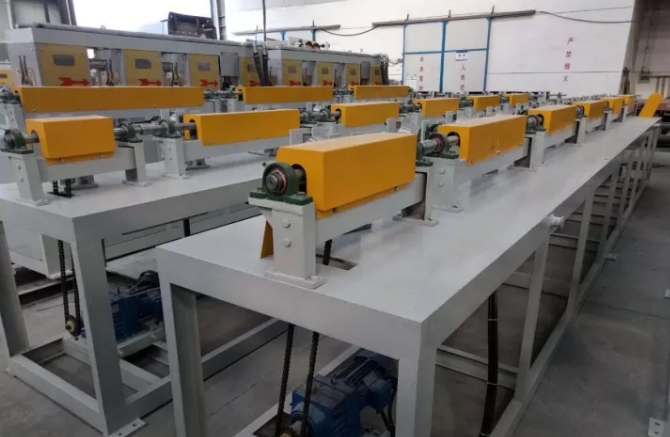
The application of bolt reinforcement technology in engineering is very extensive. At present, it has been developed in the application of ground anchoring in underground engineering, slope engineering, structural anti-floating engineering, deep foundation pit engineering, gravity dam reinforcement engineering, bridge engineering, and anti-overturning and seismic engineering. In recent years, my country’s ongoing large-scale infrastructure construction including high-speed railways, cross-sea bridges, subsea tunnels, subways, wind power, etc. encountered foundation treatment, slope reinforcement, underground space structure reinforcement, and underwater space structure solidification. Among the various problems, the method of reinforcing the anchor rod has been greatly expanded. Like other quenching and tempering, the induction quenching and tempering heat treatment production line is mainly to improve the mechanical properties of the bolt and obtain the desired sorbite structure.
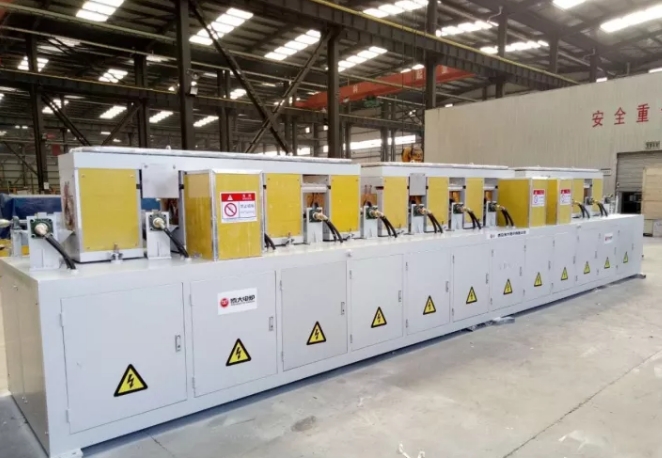
Project Introduction:
Independent research and development, production and manufacturing. This quenching and tempering heat treatment production line consists of two parts: quenching and tempering; the quenching heating part is composed of two sets of intermediate frequency power supplies with different powers and multiple sets of heating induction coils. The total power of the quenching part is 750Kw, the total power of the tempering part is 400Kw, and the bus length reaches 38.62. M, the spray part is composed of three groups of spray circles.
Process and technical parameters:
Savaivony bar (mm): Φ30-65
Bar halavan’ny isan-karazany (mm): 2000-7500
Bar material: 45, 40Cr, 42CrMo, etc.
Quenching mari-pana: 750-1200 ℃
Tempering mari-pana: 500-900 ℃
Hardness range: 25-40HRC
Famokarana ambony indrindra: 2t/h
The final hardness uniformity is required to be ±10HB. On the basis of the straightness of the raw material, the straightness of the bar after quenching and tempering is required to be less than 1mm/m.
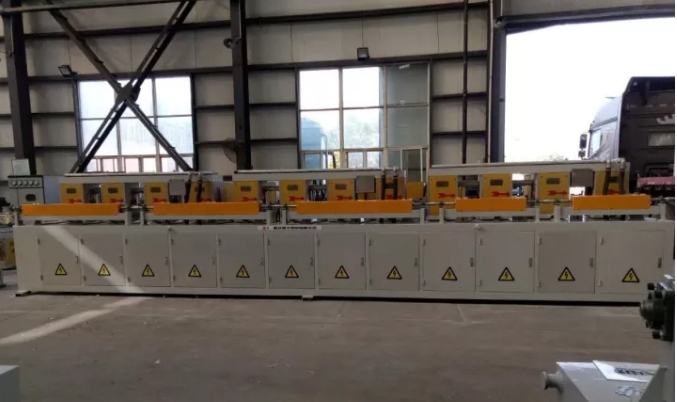
Ny peratra famafazana dia mampiasa karazana voahidy tanteraka, izay manakana ny fiparitahan’ny ranon-tsavony ary manampy amin’ny fiverenan’ny rano koa. Ny toeran’ny fitaovana famafazana grading dia azo amboarina, ary misy tohodrano ho an’ny famerenana ny ranon-tsakafo mba hisorohana ny fiparitahan’ny rano. Ny haavon’ny rafitra famafazana tsirairay dia manana paompy rano tsy miankina sy flowmeter elektronika mba ho azo fehezina.
